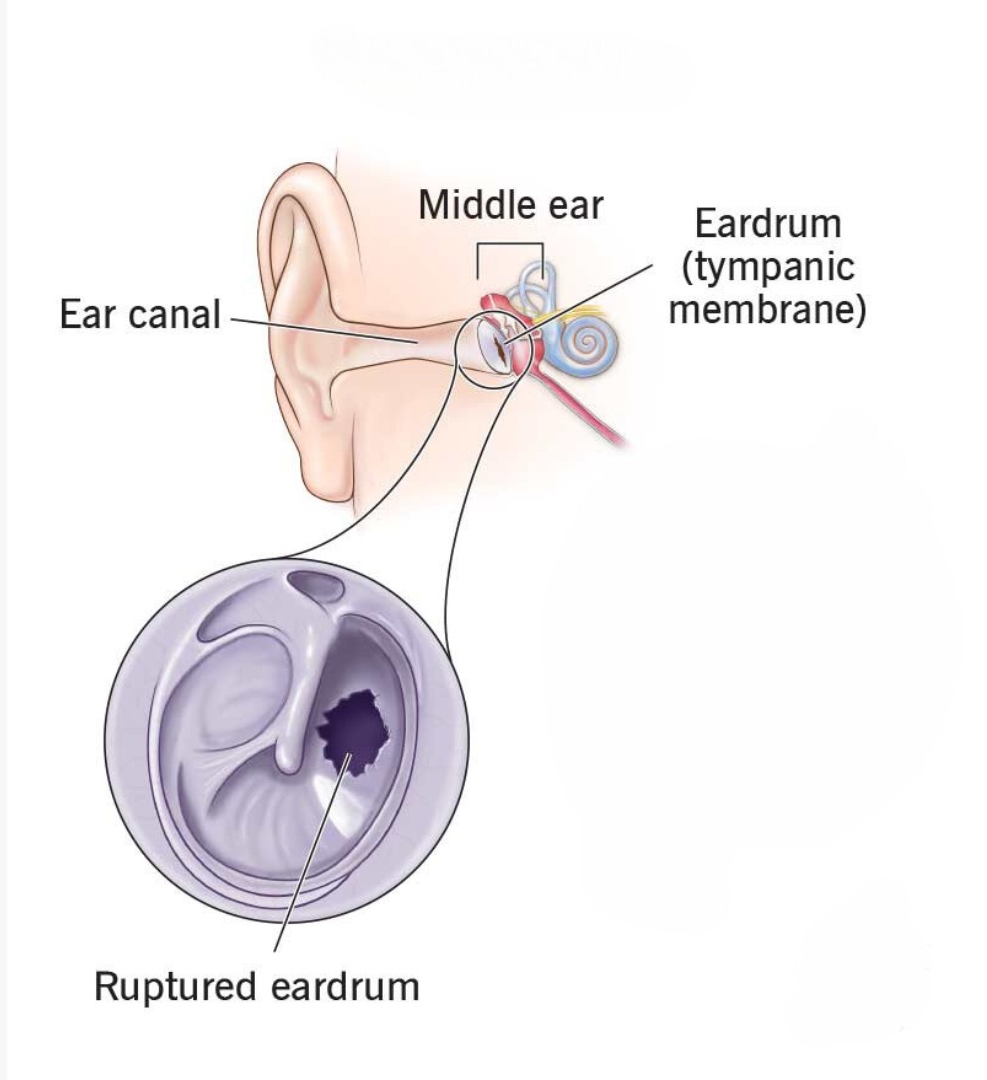
Why is the surgery done
Tympanoplasty and mastoidectomy surgeries are performed for different reasons:
Some common reasons for Tympanoplasty procedure include:
- Chronic ear infections that have caused damage to the eardrum
- Trauma to the ear that has resulted in a perforated eardrum
- Tumors or growths in the middle ear that need to be removed
Tympanoplasty surgery aims to improve hearing and prevent further damage or infections to the middle ear.
Mastoidectomy may be recommended if:
- Antibiotics have not been effective in treating the ear infection
- The infection has spread to the mastoid bone and is causing complications such as hearing loss, vertigo, or meningitis
- There is a cyst or tumor in the mastoid bone that needs to be removed
What to expect post surgery
After a tympanoplasty or mastoidectomy surgery, the patient can expect some discomfort and swelling in the ear and surrounding area. The level of discomfort may vary depending on the extent of the surgery and the individual's pain tolerance. Pain medications will be prescribed to help manage any discomfort.
Some other common post-surgery symptoms include:
- Drainage from the ear
- Temporary hearing loss or a feeling of fullness in the ear
- Dizziness or vertigo
- Tinnitus (ringing in the ear)
- Mild to moderate nausea
It is important to keep the surgical area clean and dry, avoiding strenuous activity, and taking medications as prescribed. The patient may need to wear a protective dressing over the ear for several days after surgery.
The recovery period for a tympanoplasty or mastoidectomy varies depending on the extent of the surgery and the individual's overall health. Most patients are able to return to normal activities within a few weeks, although some restrictions may be necessary for a longer period.
Risks associated with the surgery
As with any surgical procedure, there are potential risks associated with tympanoplasty and mastoidectomy surgeries. Some of the risks include:
- Infection
- Bleeding
- Temporary hearing loss
- Tinnitus
- Anesthesia complications
Frequently Asked Questions
-
WHAT IF I SNEEZE AFTER TYMPANOPLASTY
IT IS PREFERABLE TO SNEEZE WITH MOUTH OPEN TO AVOID RAISE OF PRESSURE OVER EARS.
-
HOW SERIOUS IS EAR DRUM SURGERY
MINOR SURGERY
-
CAN YOU HEAR WITHOUT AN EARDRUM
NO,EAR DRUM IS REQUIRED FOR THE TRANSMISSION OF SOUND TO MIDDLE EAR.IT IS PREFERABLE TO DO SURGERY AND REPAIR THE EARDRUM.
-
HOW DO YOU FIX AN EAR DRUM HOLE WITHOUT SURGERY
WE CAN FRESHEN THE MARGINS OF PERFORATION IF IT IS VERY SMALL BUT THE RESULTS ARE UNCERTAIN.
-
IF IT IS LARGE SURGERY IS MANDATORY.
-
IS TYMPANOPLASTY A DAY CARE SURGERY
YES BUT ADMISSION MAY DEPENDS UPON THE GENERAL CONDITION OF PATIENT.
-
CAN I SLEEP ON MY EAR AFTER TYMPANOPLASTY
U SHOULD SLEEP ON OPPOSITE EAR TILL SUTURES AND BANDAGES ARE REMOVED
-
WHAT HAPPENS IF TYMPANOPLASTY FAILS
REVISION TYMPANOPLASTY CAN BE DONE.
-
Why choose Amrita ENT for Tympanoplasty?
Our expert surgeons ensure safe, advanced, and successful eardrum repair with excellent care.
-
How experienced are Amrita ENT’s Tympanoplasty surgeons?
Our specialists have years of experience in advanced ear surgeries with high success rates.
-
What are the INDICATIONS to get Tympanoplasty
CONDUCTIVE HEARING LOSS/ TM PERFORATION /OSSICULAR NECROSIS CHRONIC SUPPURATIVE OTITIS MEDIA TRAUMA TO TYMPANIC MEMBRANE ; OSSICLES TYMPANOSCLEROSIS , DEEP RETRACTION POCKETS , CONGESTAT MIDDLE EAR DEFECTS
-
SIDE EFFECTS OF TYMPANOPLASTY
TINNITUS, DECREASED SENSATION OF TASTE, MILD BLEEDING
-
HOW LONG IS TYMPANOPLASTY RECOVERY
2 WEEKS AT LEAST
-
CAN TYMPANOPLASTY RESTORE HEARING
YES HEARING WILL IMPROVE AFTER TYMPANOPLASTY
-
HOW LONG DOES TYMPANOPLASTY LONG
Tympanoplasty usually takes around 1 hour. Procedure can be done under local anesthesia except in children.
-
CAN I WALK AFTER TYMPANOPLASTY
YES
-
WHAT IS SUCCESS RATE OF TYMPANOPLASTY
underlay technique of tympanoplasty has more than 97% of success rate if all the instructions given by doctor are followed.
-
IS THERE AN AGE LIMIT FOR TYMPANOPLASTY
NO
-
What advanced techniques does Amrita ENT use?
We use state-of-the-art microsurgical techniques for precise and effective eardrum repair.
-
How is post-surgery care at Amrita ENT?
We provide personalized recovery plans for faster healing and better hearing restoration.
